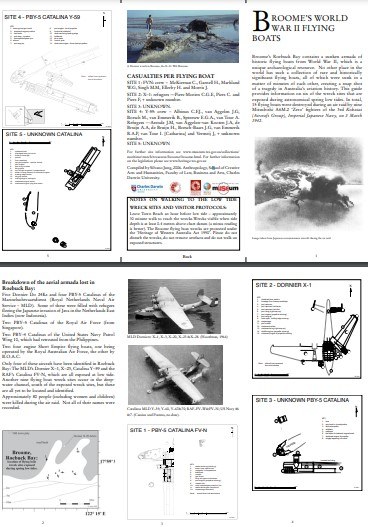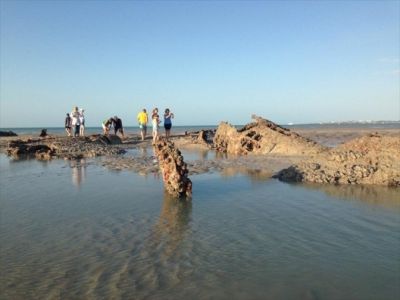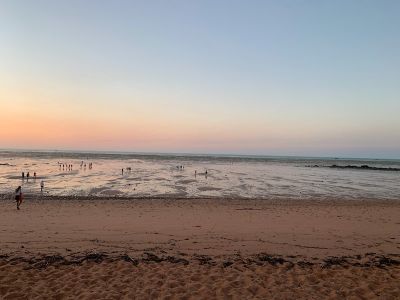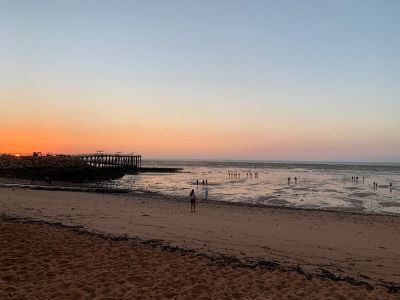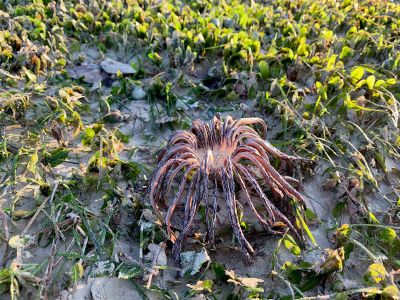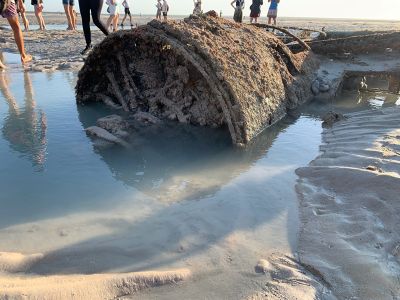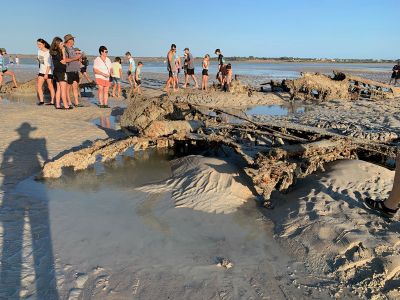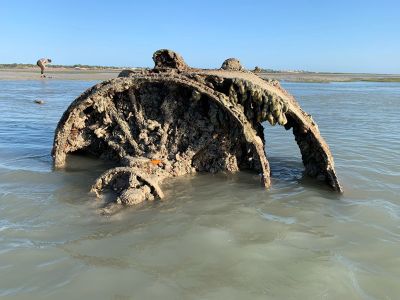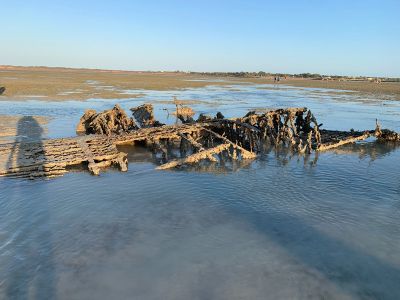
Broome's Catalina WWII Flying Boat Wrecks
Roebuck Bay contains a sunken armada of World War II flying boat wrecks that are fully visible at tides less than 0.86m. No other place in the world has such a collection of rare and historically significant flying boats. The mud has done a very good job of preserving the aircraft.
At extremely low tides, the plane wrecks are visible to those who wish to walk the kilometre across the Roebuck Bay mud flats from Town Beach.
Submerged by sea, but visible on very low tides, these wrecks are heritage protected and respected by the local community, due to them being 'war graves' of the over 100 lives lost when war came to Broome.
Broome and the pearling industry were impacted by both World Wars. During World War I pearling trade lapsed and hundreds of tonnes of shell were left in warehouses and were ruined. The industry continued after the war, though it never fully regained its earlier momentum.
In February 1942 Allied personnel were ordered to evacuate Dutch East Indies (Indonesia) as an attack by the Japanese was imminent. During February and March over 8000 refugees passed through Broome en route to Perth and Sydney using whatever aircraft was available.
On the 3rd of March 1942, nine Japanese Mitsubishi Zero fighters left Koepang, in Timor, and made a daring air bombardment of Broome. They destroyed fifteen flying boats on Roebuck Bay and six aircraft at the Broome airfield. It is estimated over 100 people died during the attack. Heroic rescues by locals and aircrew saved many lives. The attack left no useable aircraft in Broome. Read more at the Broome Historical Museum website.
To this day, the wrecks of some of the aircraft can be seen at very low tide at certain times of the year.
How can I see the flying boat wrecks in Roebuck Bay?
Visitors walk out on the mudflats of Roebuck Bay to see wrecks of some of the aircraft can be seen at very low tide at certain times of the year. The walk is from Town Beach and takes about an hour (1km across mudflats) and about the same to walk back. You need to leave with time before the tides change (usually leave about an hour before lowest tide). The tide must be below 0.86m for the wrecks to be visible. There is a new artwork commemorating 80 years since the Broome Air Raids called 9 Zeros - 9 Stories at Town Beach. The nine aluminium figures in this artwork are facing the direction of the flying boat wrecks.
How long does it take to walk out to the Catalina and Dornier Flying Boat Wrecks?
We recommend you allow an hour to walk to out to the wrecks, and an hour to return to shore. Enclosed shoes are also recommended. This walk may be considered strenuous for some, so ensure you are always safe and fit enough to walk the distance in low tide and shallow water.
Are the flying boat wrecks protected?
The wrecks are protected under the Heritage of Western Australia Act 1990. Please do not disturb them, do not remove artefacts and do not walk on exposed structures.
Can I see photos of the flying boat wrecks?
We have some fantastic photos provided to the Broome Visitor Centre for our exclusive use by Maddison Hall on this page.
Are there any tours to see the flying boat wrecks in Roebuck Bay?
Yes, you can book online on very select dates each year to book a shallow boat tour to the flying boat wrecks. These tours are usually an early start and are a fantastic way to get the full commentary from an experienced guide.
Where can I learn more about the history of the air attacks in Broome and the day war came to Broome?
The Broome Historical Museum is a fantastic place to start reading about the history of the air attacks. They have lots of information as well as books for sale. When you come to Broome, you can visit the museum and see artefacts and learn more. We also have a new art installation near the new jetty at Town Beach called 9 Zeros - 9 Stories which was created to acknowledge the 80th anniversary of the Broome Air Raid.
How can I find out the best times to see the flying boat wrecks?
The giant tides are part of Broome's unique charm, but it is important to know the times of the tides if you plan to drive on Cable Beach or want to try your hand at mud crabbing in Roebuck Bay. View our marked up tides chart for dates when the tides are low enough to walk out to the flying boat wrecks (you will need to cross check the sunrise and sunset times for your own safety). You must be safe at all times and be informed before you set out.
- Download our Tides document with Staircase, Catalina Flying Boat Wrecks and Dinosaur Footprint dates

Buy the book 'Broome's One Day War'
Read more about Broome's fascinating history...More information about the flying boat wrecks and the air raid on Broome can be found at the Broome Historical Museum. You can purchase a copy of The Broome Historical Society’s publication Broome’s One Day War (click to order online) from our museum in Broome.
Take a look at an in-depth description of the exposed wreck in Roebuck Bay, complied by Silvano Jung from Charles Darwin University. It contains impeccably detailed diagrams of the wrecks and maps of their locations.
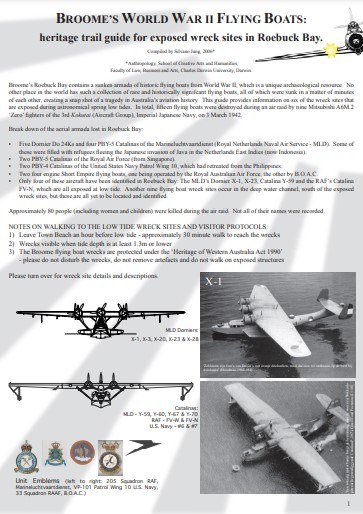
View The Broome Flying Boat compendium: a guide to navigating the Department of Maritime Archaeology archives and collection from the Western Australian Museum's Maritime Archaeology Databases.
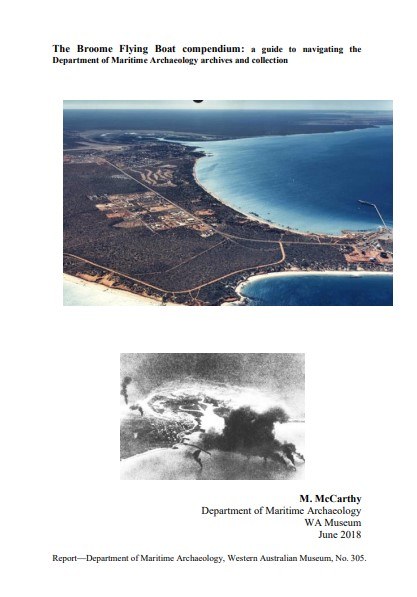
Download this fact sheet from the Museum of Western Australia website.
